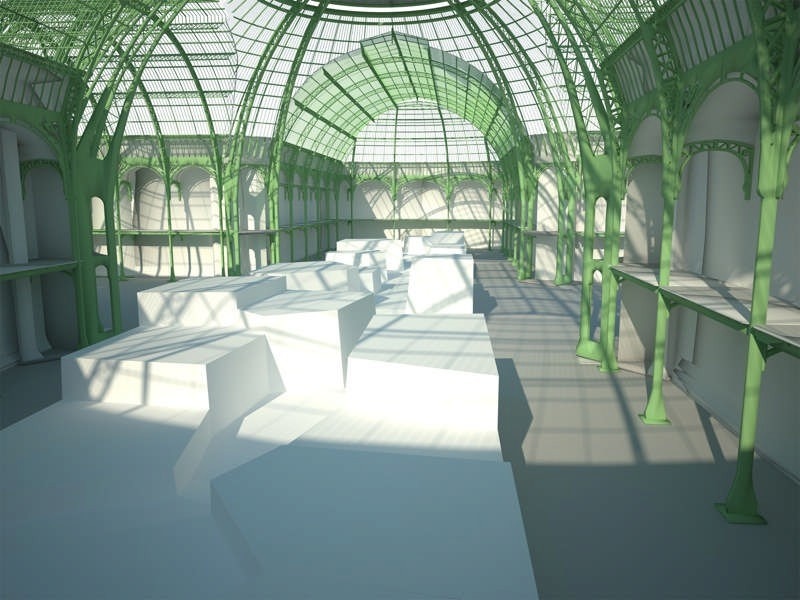The second edition of the exhibition "Force de l'Art" was
entrusted to three well-
known figures selected for their commitment and
closeness to
the reality of the artists' work. Three generations, and
three singular approaches: Jean-Louis Froment, Jean-Yves
Jouannais and Didier Ottinger all wanted to give priority to
a direct rapport with the works. To do so, they asked
French architect
Philippe Rahm to dream up a fresh new architectural
offering for the glass-and-steel framed setting of the
Grand Palais,
one in which all publics could live a direct experience of
the strength and energy of the works. To produce a non-
thematic space, a terrain for walking freely through the
world of art without being satisfied with "just
having the art works admired", the curators' project
implied an explicit artistic approach, using the space both
as a
neutral mediator and as the vector of artistic emotion. A
place needed to be invented that would be appropriate in a
new
way, exhibiting without encumbering with meaning nor
framing with a reading of the works; rather, simply
directly putting
the artwork and its public in each other's presence. This
ambition resulted in the "natural landscape", a neutral and
objective backdrop, stripped of meaning, favouring the
discovery of which the conception and completion was
entrusted
to architect and exhibition designer Philippe Rahm.
"More than an architectural project, we are
offering a geological process generated by the force of the
artworks
themselves. It is first a volume in the space, a certain
quantity of substance, a certain rate of reverberation. Our
project
sets up a process: starting with a parallelogram measuring
160 m by 25 m and of a certain thickness, functioning like
a
paste which will begin to become deformed, to develop
hollows, to swell in accordance with the play of forces
which
assume a geological language shaping the landscape with
tectonic movements, deformations, pressures and
depressions, folds. Yet there is no naturalism here; these
are abstract forces which are at the origin of the
movements
and deformations shaping this territory, that of the
artworks themselves. At first each artwork is given the
same space and volume. And then, depending on their
dimensions and the necessary
distance between them and the observer, they will begin to
push against each other in a movement similar to that of
tectonic plates. Depending on their weight and the amount
of light required, they will then deform the surface, create
hollows, swell it, raise up heights. A white landscape
appears, the "white cube" opens up, against which the
shapes,
textures and substances of the artworks will stand out and
be showcased. It is therefore a reversed exhibition space
proposed here; it is not the artwork which adapts to the
architecture, but the architecture which folds and changes
its
shape to respond to the demands of the artwork. In this
way the artworks are together in a play of mutual pushing
and
pulling, simultaneous and reciprocal balances, giving rise
to the surging forth of the landscape." Philippe
Rahm
Philippe Rahm dresses the Grand Palais

View Article details
- Elena Sommariva
- 02 March 2009
